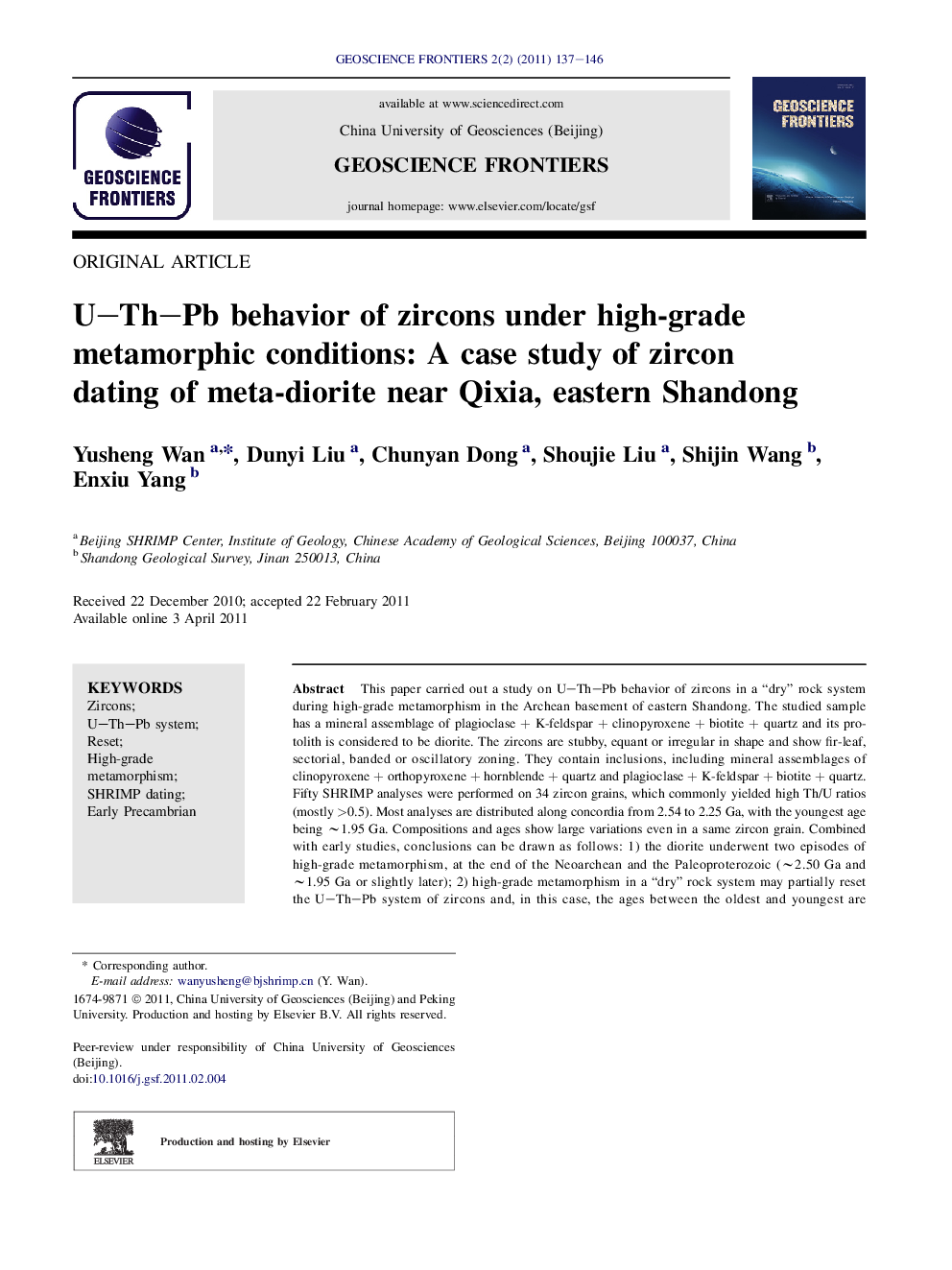| Article ID | Journal | Published Year | Pages | File Type |
|---|---|---|---|---|
| 4681922 | Geoscience Frontiers | 2011 | 10 Pages |
This paper carried out a study on U–Th–Pb behavior of zircons in a “dry” rock system during high-grade metamorphism in the Archean basement of eastern Shandong. The studied sample has a mineral assemblage of plagioclase + K-feldspar + clinopyroxene + biotite + quartz and its protolith is considered to be diorite. The zircons are stubby, equant or irregular in shape and show fir-leaf, sectorial, banded or oscillatory zoning. They contain inclusions, including mineral assemblages of clinopyroxene + orthopyroxene + hornblende + quartz and plagioclase + K-feldspar + biotite + quartz. Fifty SHRIMP analyses were performed on 34 zircon grains, which commonly yielded high Th/U ratios (mostly >0.5). Most analyses are distributed along concordia from 2.54 to 2.25 Ga, with the youngest age being ∼1.95 Ga. Compositions and ages show large variations even in a same zircon grain. Combined with early studies, conclusions can be drawn as follows: 1) the diorite underwent two episodes of high-grade metamorphism, at the end of the Neoarchean and the Paleoproterozoic (∼2.50 Ga and ∼1.95 Ga or slightly later); 2) high-grade metamorphism in a “dry” rock system may partially reset the U–Th–Pb system of zircons and, in this case, the ages between the oldest and youngest are chronologically meaningless; and 3) high Th/U ratios may be common features of zircons formed during high-grade metamorphic conditions.
